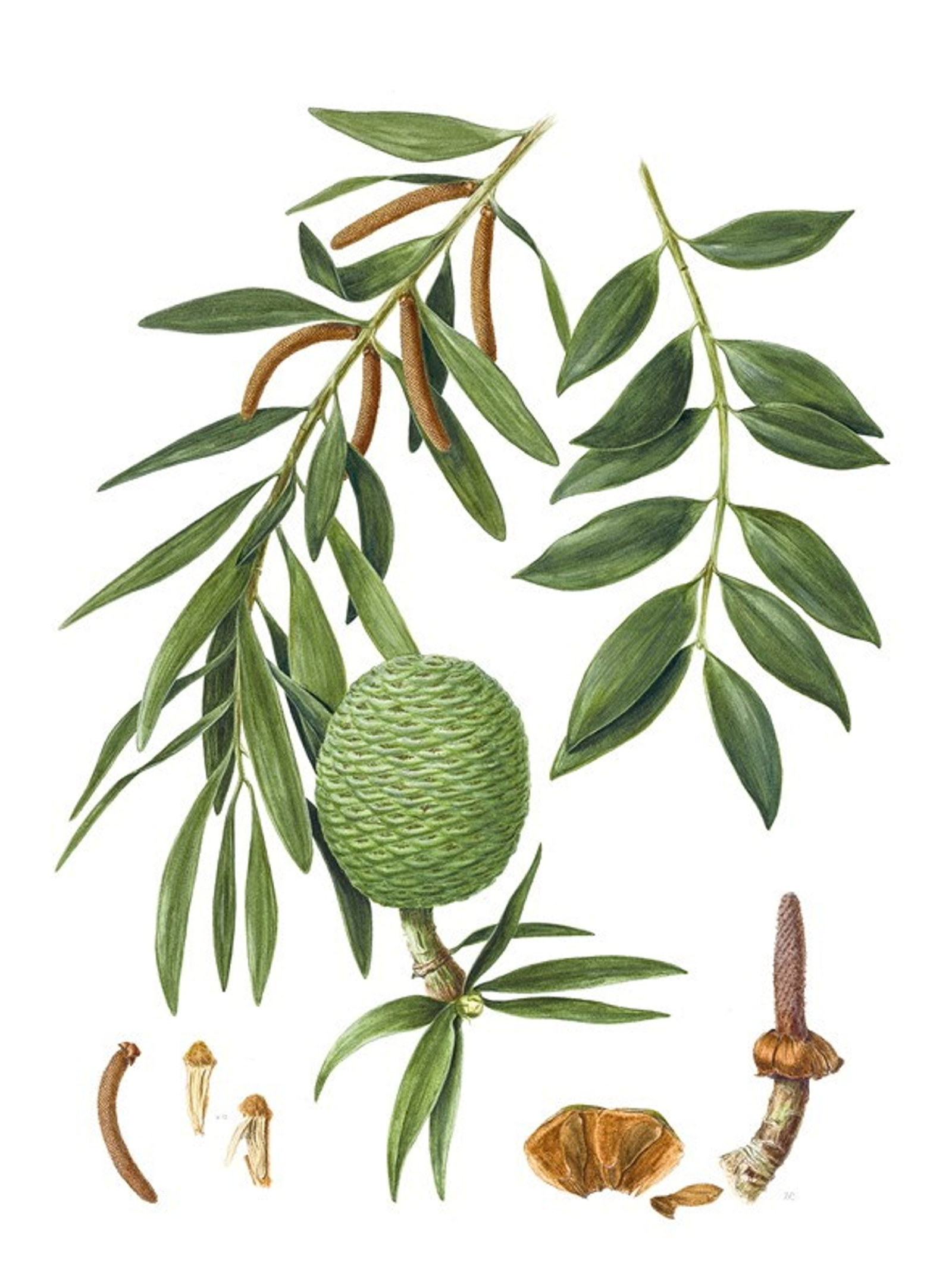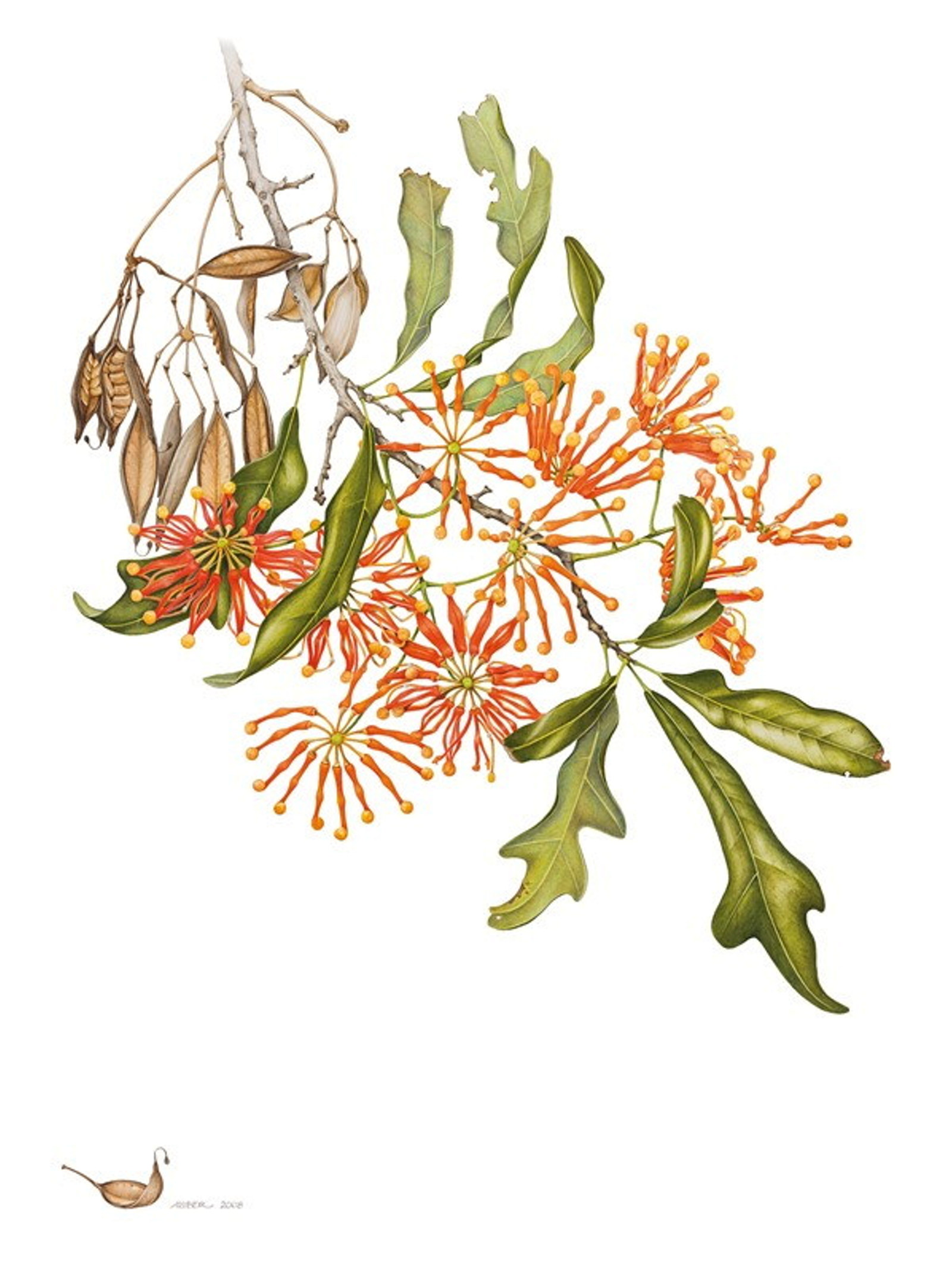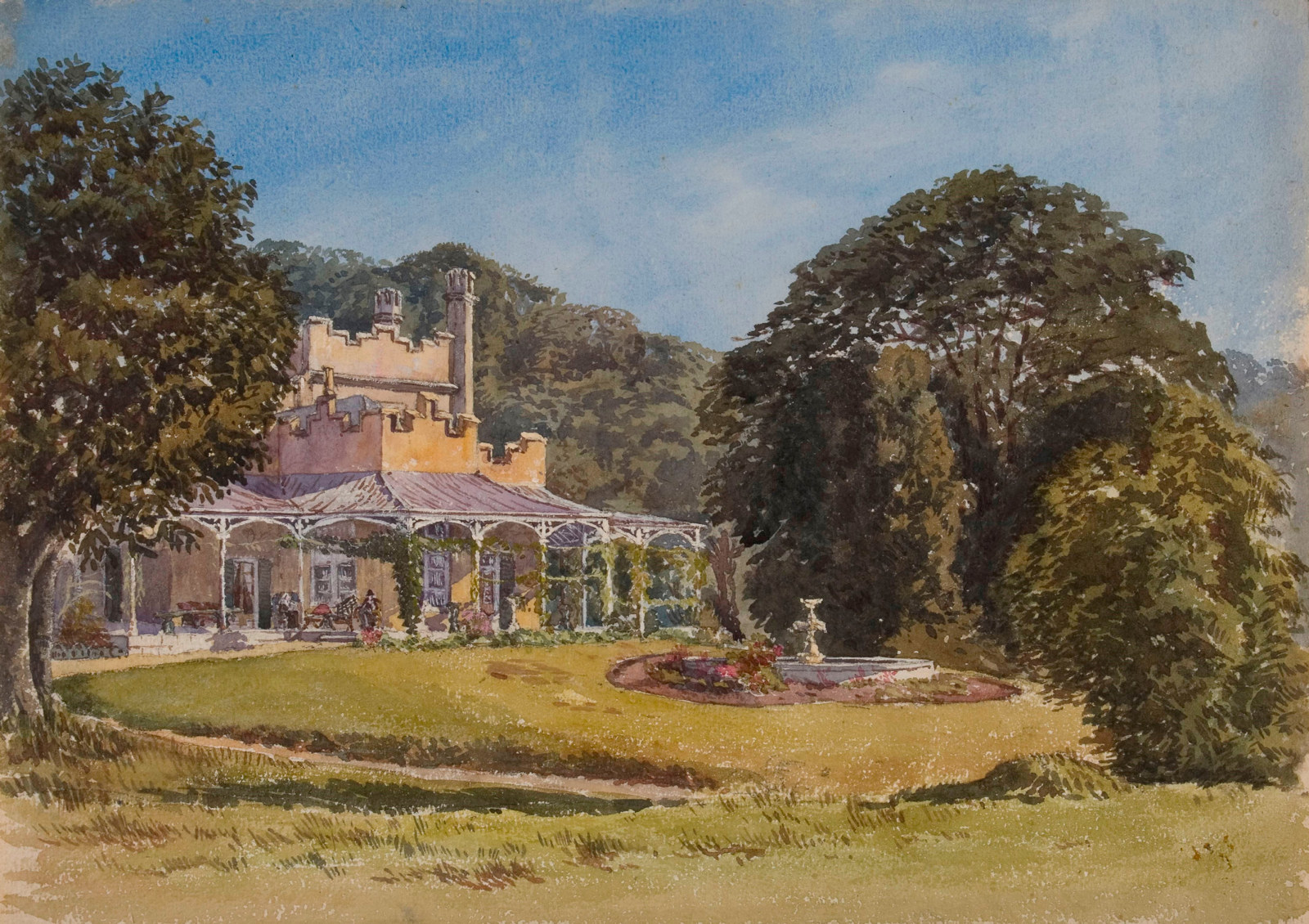Prickly pear
Opuntia ficus-indica
Vaucluse House
A hedge of prickly pears
In 1834 viticulturist James Busby wrote with approval of the prickly pear hedges he had encountered in southern Spain:
If there is any part of the rural economy of the Andalusians which the settler of New South Wales could adopt with advantage, it is the hedge of prickly pears. It is not possible to imagine a more effectual fence …
Following his advice, the re-created Victorian kitchen garden at Vaucluse House is bordered on one side by a thick hedge of the flowering cactus, which was employed in the colony to deter thieves and wandering stock.
The first Opuntia plants were introduced to NSW in 1788 in the hope of establishing a cochineal industry (prickly pears are host to the cochineal beetle, used in the manufacture of scarlet dye). While some species became devastating environmental weeds, the prickly pear at Vaucluse House is the less invasive Indian fig, still grown for its edible fruit.
Published on
Florilegium plants
Browse all
Florilegium plants
Queensland kauri pine
The kauri’s journey from the rainforests of Queensland to the garden at Elizabeth Bay illustrates the close links between gentlemen gardeners and the Botanic Garden

Florilegium plants
A gathering of flowers: the Florilegium collection
Finely detailed botanical artworks reveal the range of plants introduced to Sydney’s gardens over the past 200 years

Florilegium plants
Florilegium: plant stories from our gardens
Native plants and exotic species from abroad have shaped Sydney’s gardens from the earliest days of the colony. Through the tales of their discovery, collection and exchange, and the horticultural trends that drove their popularity, our gardens reveal captivating stories spanning more than 200 years

Florilegium plants
Port Jackson fig
A giant Port Jackson fig standing at the eastern corner of Vaucluse House is likely to date from the mid-1850s. Together with an older Moreton Bay fig, planted on the western side, it framed the pale sandstone Gothic Revival house with dark evergreen foliage